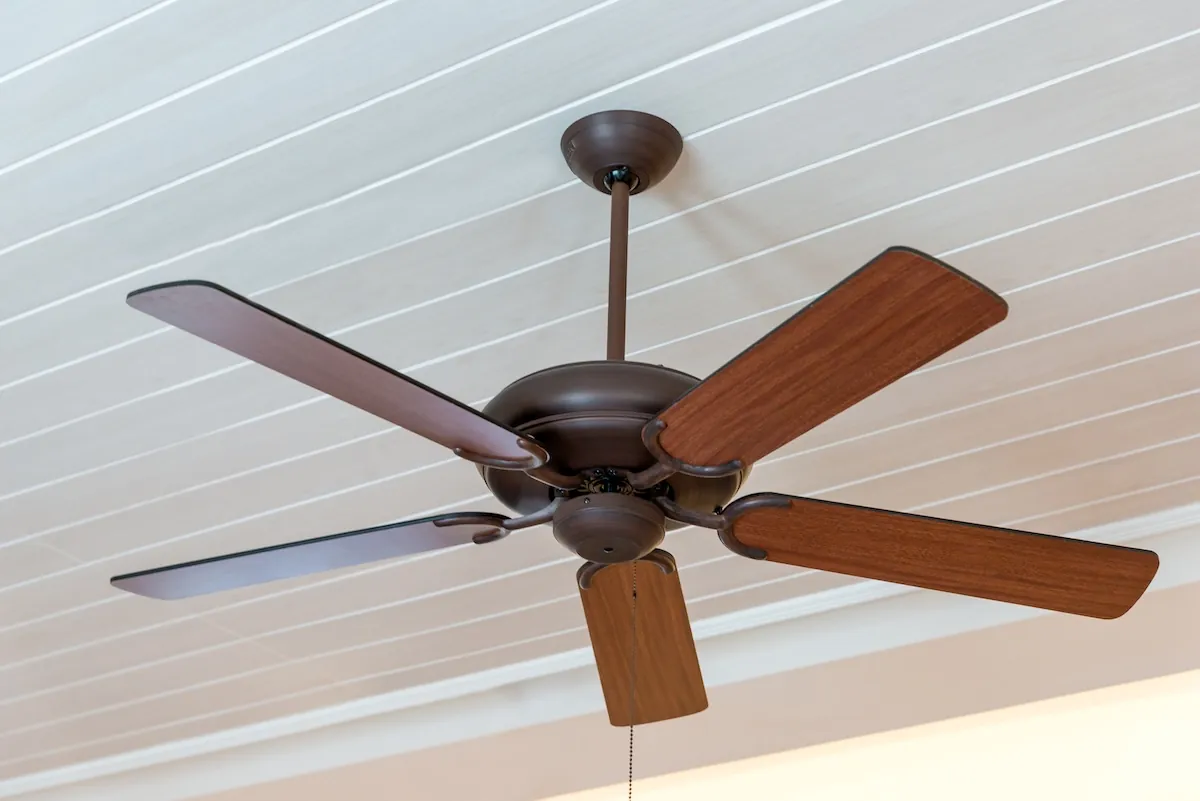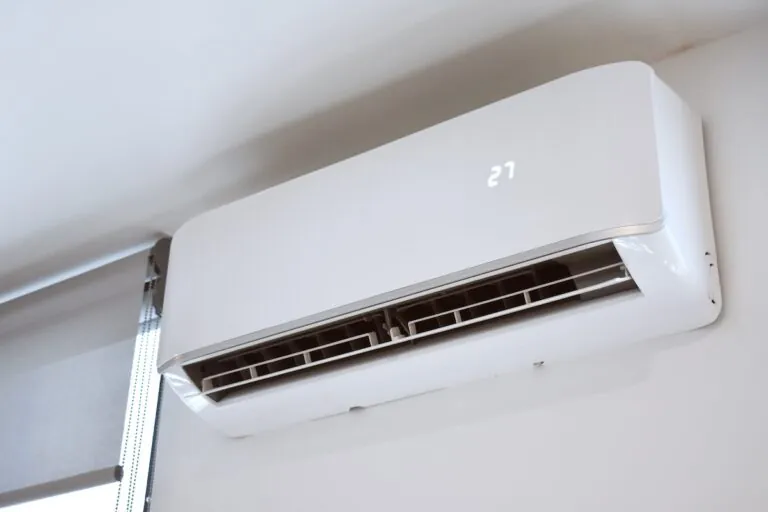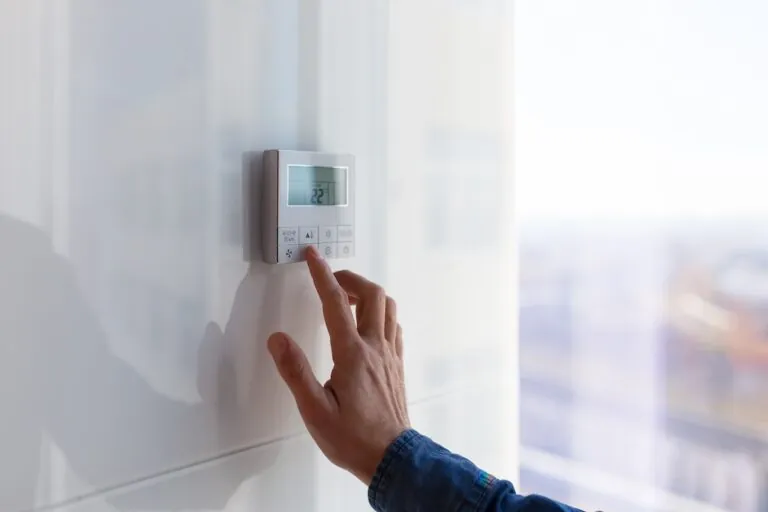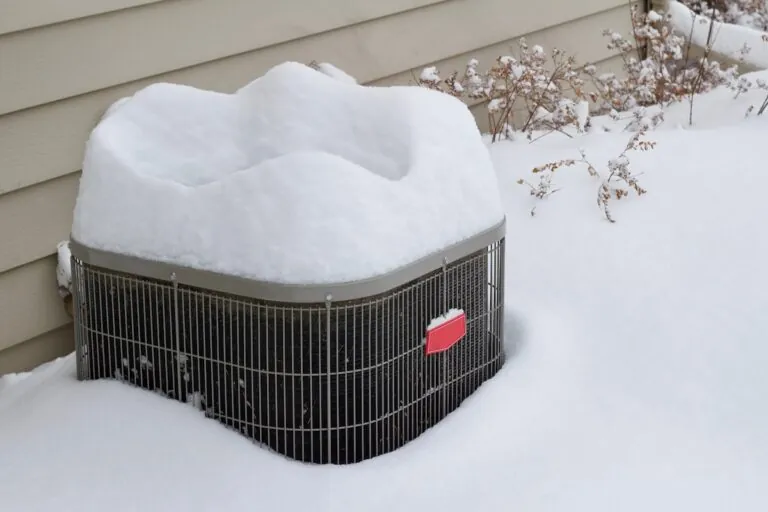Understanding the right ceiling fan direction with air conditioning can significantly improve your home’s comfort and energy efficiency year-round. While ceiling fans don’t actually lower the temperature in a room, they do change how air moves—and when used correctly, they can help your HVAC system work smarter, not harder.
This guide will show you the best ceiling fan direction for summer and winter, explain how it affects your heating and cooling system, and offer tips to make the most of your ceiling fans in every season.
- Correct fan direction helps distribute warm or cool air more effectively.
- Seasonal fan adjustments can improve comfort and reduce strain on your HVAC system.
- Pairing ceiling fans with your AC or furnace can lower energy costs.
💨 How Ceiling Fans Work With HVAC Systems
Ceiling fans don’t cool the air like your AC, but they create wind chill by moving air across your skin. This airflow makes you feel cooler in summer and can help push warm air downward in winter.
When your fans spin in the right direction for the season, they support your HVAC system’s efforts, reducing how often your heating or cooling system needs to run.
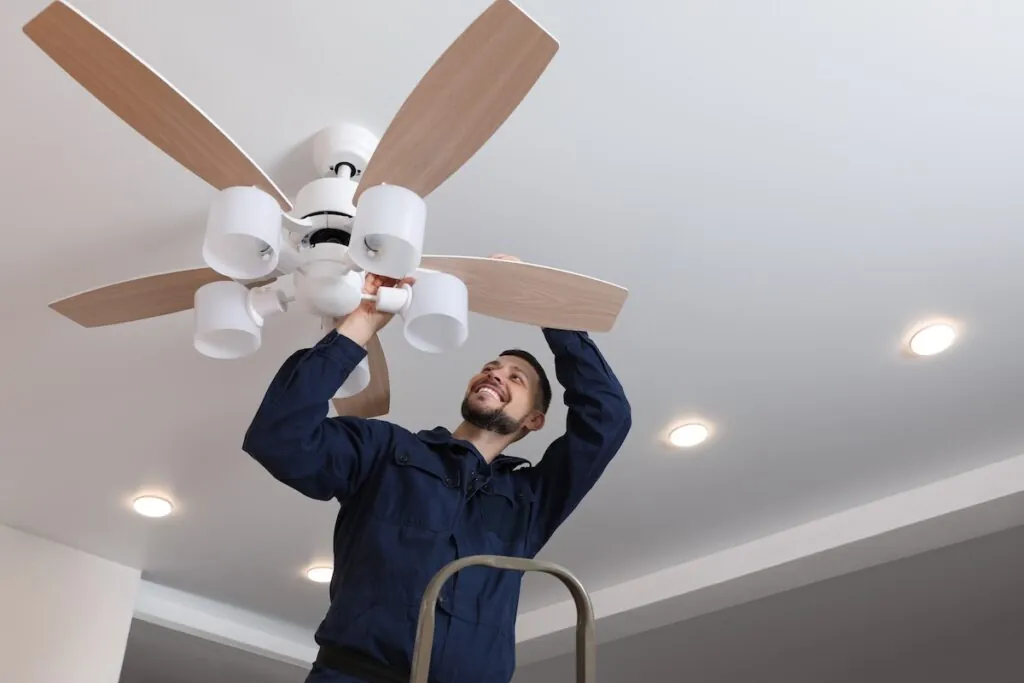
The Science of Air Movement
Air naturally stratifies, meaning warm air rises and cool air sinks. Ceiling fans disrupt this pattern in your favor:
- In summer, they circulate cool air downward to improve cooling.
- In winter, they recirculate rising warm air near the ceiling back down to where people are.
☀️ Summer Ceiling Fan Direction: Counterclockwise
During the warmer months, your ceiling fan should rotate counterclockwise when you look up at it. This creates a downward breeze that helps you feel cooler, even if the room temperature hasn’t changed.
Why Counterclockwise Is Best in Summer
- Creates a wind-chill effect: The air movement across your skin increases evaporation and cools you down.
- Boosts AC performance: Fans allow you to raise your thermostat a few degrees while staying comfortable.
- Reduces energy use: Less demand on your AC can lower your energy bill.
How to Check the Direction
Turn the fan on and stand beneath it:
- If you feel a strong breeze blowing straight down, it’s spinning counterclockwise.
- Most fans have a small switch on the motor housing—flip it to change direction if needed.
❄️ Winter Ceiling Fan Direction: Clockwise
In cold weather, your ceiling fan should rotate clockwise at a low speed. This pulls cool air up and pushes the warmer air trapped near the ceiling down along the walls and back into the living space.
Why Clockwise Rotation Helps in Winter
- Recirculates warm air: Helps distribute heated air from your furnace more evenly throughout the room.
- Increases comfort: You feel warmer faster without needing to crank up the thermostat.
- Improves efficiency: Your HVAC system doesn’t need to run as often to maintain a consistent temperature.
Important Tip
Make sure to run your ceiling fan on low speed in winter. High-speed airflow can create a drafty effect, which will make the room feel cooler instead of warmer.
💪 How Ceiling Fan Direction Supports HVAC Efficiency
Using the correct fan direction throughout the year helps lighten the load on your heating and cooling systems. When your fans assist with air circulation, your HVAC equipment doesn’t have to work as hard.
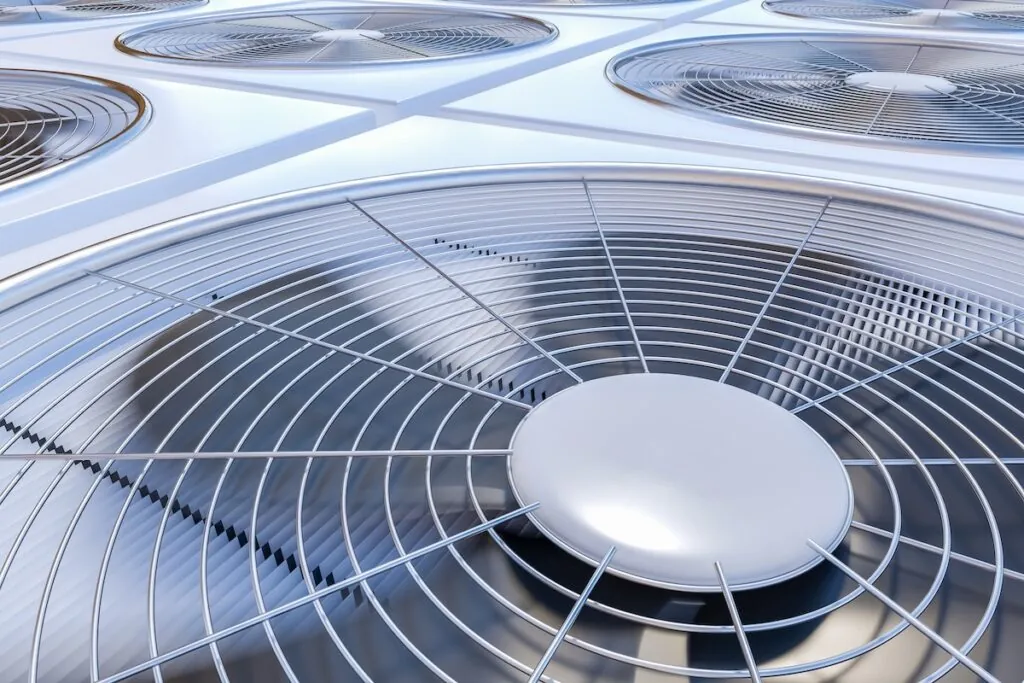
Benefits for Your HVAC System
- Lower runtime: Fans keep temperatures consistent, so your system cycles on and off less frequently.
- Extended lifespan: Reduced strain means fewer repairs and a longer system life.
- Better comfort: Consistent airflow eliminates hot or cold spots, especially in rooms with vaulted ceilings or poor airflow.
👉 Ideal Fan Settings by Season
Here’s a quick seasonal reference chart for how to run your ceiling fans in conjunction with your HVAC system:
| Season | Fan Direction | Fan Speed | Thermostat Adjustment |
| Summer | Counterclockwise | Medium to High | Raise by 2–4°F |
| Winter | Clockwise | Low | Lower slightly if needed |
🏠 Which Rooms Should Use Ceiling Fans?
While ceiling fans are helpful in almost every room, some areas benefit more than others from properly adjusted airflow.
Living Rooms and Bedrooms
These rooms are often used for long periods, and comfort is key. Adjust fan direction seasonally for maximum comfort day or night.
Upstairs Rooms
Hot air rises, making upper floors warmer in the summer and slower to warm in the winter. Ceiling fans help regulate these temperature differences.
Open Floor Plans
Large spaces with high ceilings or open layouts are prone to air stratification. A fan can help mix the air for more even temperatures throughout.
💡 Can Smart Ceiling Fans Help?
Yes! Smart ceiling fans and compatible switches make seasonal adjustments even easier. Some smart fans auto-detect room temperature and humidity, adjusting direction or speed as needed. Others can be controlled via phone apps or voice assistants.
Smart Fan Features to Look For
- Programmable settings: Schedule direction and speed based on time of day or season.
- App or voice control: Adjust fans without reaching for pull cords or wall switches.
- Integration with smart thermostats: Optimize energy savings with coordinated fan and HVAC control.
❌ Common Ceiling Fan Mistakes to Avoid
Even small ceiling fan missteps can lead to reduced comfort or wasted energy. Here’s what to watch out for:
- Using the wrong direction: Double-check fan rotation each season, especially after power outages or fan maintenance.
- Running fans in empty rooms: Fans cool people, not rooms. Turn them off when the space is unoccupied to save energy.
- Using high speed in winter: Always run fans on low in colder months to avoid creating an unwanted breeze.
- Installing fans that are too small or too low: Make sure your fan size and mounting height match the room size for effective air movement.
💪 How Genz-Ryan Can Help Optimize Your Home Comfort
At Genz-Ryan, we believe home comfort is more than just hot or cold—it’s about consistency, control, and efficiency. Our HVAC experts can help you:

- Evaluate your current ceiling fan setup
- Recommend energy-efficient fan models
- Install smart thermostats that integrate with ceiling fan schedules
- Improve air circulation with ductwork adjustments, zoning, or airflow balancing
Whether you need guidance on ceiling fan direction with air conditioning or want to improve your system’s year-round performance, we’re here to help.
✅ Use Ceiling Fans the Right Way for Year-Round Comfort
The direction your ceiling fan spins may seem like a small detail, but it plays a big role in your comfort and your HVAC system’s efficiency. By setting your fans to spin counterclockwise in summer and clockwise in winter, you can improve airflow, reduce energy use, and maintain more consistent temperatures.
Genz-Ryan has been helping homeowners in the Twin Cities stay comfortable for over 70 years. If you’re ready to get the most out of your HVAC system—with ceiling fans, airflow adjustments, or a full home comfort evaluation—contact us today for a free quote.
Let’s make every room in your home feel just right, all year long.



